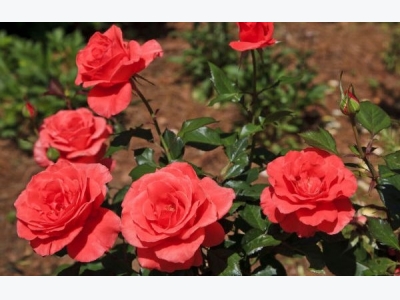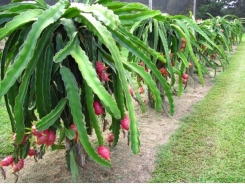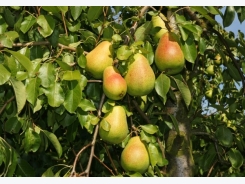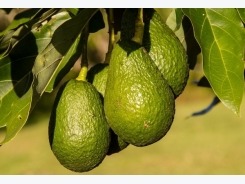Rose Cultivation Information Guide

Introduction of Rose Cultivation:- Rose is one of the popular, oldest, modern and lovely flower grown all over the world. Rose plants can be a kind of shrubs, climbing or trailing with stems that are often armed with sharp prickles. Flowers vary in size and shape and are usually large and showy, in colours ranging from white through yellows, reds or multi-colours. Most of rose species are native to Asia, with smaller numbers native to Europe, North America, and northwest Africa. Rose plants range in size from compact, miniature roses, to climbers that can reach 7 meter in height. There are many rose varieties developed in different regions of Asia.
The rose plant belongs to the family of “Rosaceae” and genus of “Rosa”. Rose cultivation is always in high demand due to national and international markets.There are many verities of rose flowers are available. However, before going for commercial rose farming, it is important to select the right cultivar for your region. Roses can be grown in pots, on terrace, indoor, open fields, green house and poly house. Greenhouse rose farming is becoming very popular due to controlled and protected environment. Greenhouse rose cultivation also produce quality of flowers with high yield when compared to open field cultivation.

Rose Farming
Benefits and Uses of Rose Flower:- The following are the uses and benefits of rose flower petals and rose water.
- The rose flower petals aids in weight loss
- The rose acts as a natural aphrodisiac.
- The rose flower petals relieve stress and depression.
- The rose flower petals help to combat symptoms of piles.
- The rose flower petals are a well-known astringent.
- The rose water can be used to treat acne naturally.

Growing Roses in Pots
Local Names of Rose in Asia:- Gulab (Urdu, Hindi), 장미과의 식물, Changmi (Korean), 玫瑰 (Chinese), ดอกกหุ ลาบ (Thai), Hoa hồng (Vietnamese), Rosa (Filipino), गुलफ (Nepali), Roos (Dutch), Pоза (Russin), warda (Arabic), Gul(Turkish), Muikuix (Taiwanese)

Growing Rose in Greenhouse
Local Names of Rose in India:- The following are the local names of rose in India; Gulab (Hindi), Gulaabi, Roja puvvu (Telugu), ேராஜா, Roja (Tamil), Gulābi (Konkani), Gulab (Gujarati), Glaba (Oriya), ਗੁਲਾਬ (Punjabi), �লাব (Manipuri), गुलाब, Gulab (Marathi), Gulabi (Kannada), േറാസാെ�ടി, Penimirpushpam (Malayalam).
Varieties/ Kind of Roses in Rose Cultivation:- Roses can be grouped into 3 classifications according to their growth characteristics.
Bush Roses: Basically, Bush roses are self supporting & bear flowers at the top of the plant. Plant height may reach up to 6 feet. Hybrid teas, Hybrid perpetuals, Floribunda roses, Grandiflora roses, Polyantha roses, Miniature roses and Tree or standard roses belong to this category.

Bush Rose
Shrub Roses: These roses belong to a non-specific class of wild species, hybrids, and cultivars that develop large, dense growth needing little maintenance and they are hard in nature. Species and oldfashioned roses generally bloom only once per season. Old-fashioned roses were popular in colonial gardens for their fragrance. However, we cannot compare these roses with today’s roses.

Shrub Rose
Climbing Roses: These rose plants are extremely vigorous plants with long branches that require support or training. These branches can be trained to a trellis or fence or allowed to sprawl as a bank cover. Canes may range in size from 5 feet to 20 plus feet depending on the type of rose cultivar and how they are supported. Ever blooming climbers, Rambler roses, Large-flowered climbers and Trailing roses belongs to this category

Climbing Rose
Soil and Climate Requirement for Rose Cultivation:- Rose plants require well-drained sandy loam soils rich in organic matter with pH value of 6 to 7.5 for best yield. These plants require minimum of 5 to 6 hours sunshine throughout the growth period. The temperature range of 15 °C (Nightly temperature) to 28 °C (Day time temperature) is ideal for rose cultivation. As these plants are sensitive to water-logging, make sure to have proper soil drainage to drain out the water in case of excessive water or flooding. Sunlight is very important during the flowering stage, in areas where mostly cloudy or moist conditions impact the yield of roses.

Varieties of Roses
Land Preparation in Rose Cultivation:- The planting site (Bed/pits) should be prepared at least 4 to 6 weeks before planting in the main field. Give couple of ploughing and hoeings to bring the soil to fine tilth and weed free. Prepare the beds 60 to 90 cm deep. Refill the pits with the mixture of well decomposed farm yard manure (FMY) and top-soil. Irrigate the pits to settle down the loose soil. Adding more mixture of soil and manure for leveling the bed is recommended.
Planting Season in Rose Cultivation:- The best season to plant rose plants are just before monsoon.
Propagation in Rose Cultivation:- The rose crop can be propagated by rooted cuttings or by budding on Briar root stocks. One year old budded plants are recommended to plant in July to August at 75 x 75 cm distance.

Rose Seeds
Planting and Spacing in Rose Cultivation:- Planting should be done immediately when the new plants arrive from the nursery. Rose planting late in the afternoon is considered to be the best. There should be a distance of 75 cm between plants. Make a hole of about 30cm deep and 30 cm diameter in the bed; treat the soil taken out from hole with 5% Aldrin dust (about 30 gm/hole). Rose plants with earth-ball are then set into hole with main stem in center and at level as it stood in nursery. Hold the bush firmly upright with one hand and then return treated soil to the hole around the roots and firm with hands and thorough watering immediately. If there is strong sunshine, the plants should be shaded for 4 to 5 days and leaves sprinkled with water.
Manures and Fertilizers in Rose Cultivation:- It is better to make soil rich by supplementing with organic matter while preparing the land.. At 3 months interval, apply well decomposed farm yard manure (FYM) @ 10 kg and 8:8:16 grams of N:P:K/plant after each pruning activity.
Irrigation in Rose Cultivation:- Irrigation should be carried out immediately after transplanting in the main field. The new rose plants should be irrigated frequently (once in 2 days) till they establish and settle. Subsequent watering should be done once a week. Irrigating the rose pants with salt water should be avoided. In case of heavy rains or floods, make sure the soil drains out the water quickly as these plants are very sensitive to water stagnation.
Intercultural operations in Rose Cultivation:- The following should be carried out as part of intercultural operations.
Weeding in Rose Cultivation: Weeding and hoeing should be carried out with an agriculture tool after every alternate irrigation; Usually, the suckers which are different in shape and colour appear near the base on the stem or come from the roots underground; these should be removed as soon as they appear on the pant. Flower buds or flowers from the new plants should be pinched during initial stages so that they attain good growth. Remove faded, dead or diseased flowers regularly.
Pruning in Rose Cultivation: All roses require pruning in the second year of their planting and subsequent years. Basic principles of pruning are common to all type of roses and the following are the pruning methods in rose cultivation.
- Remove interlacing shoots which make the bush crowded.
- Remove dead, drying, diseased or insect infested and damaged shoots or leaves.
- Always make sharp cut at an angle of 45 degrees at about 5 mm above a strong healthy eye pointing outward.
- In hybrid Teas only 4 to 6 strong branches (canes) on all sides of bush should be retained.
- In vigorous varieties like in climbing roses, branches should be cut back up to 30 to 45 cm length from the bud union point and each cane should have at least 5 to 6 bold eyes.
- In delicate varieties, pruning should be less severe and only light tipping is recommended.
- After pruning, about 7 to 8 kg of well rotten farm yard manure (FMY) should be added per each bush and mixed with the soil around the plant. 60 grams per plant of a mixture of N: P: K in the ratio of 120:60:40 or Di-Am-Phosphate should be applied around the plant (20 cm away from stem) and irrigate the bed after applying fertilizers. This Mixture may be applied after every 6 to 8 (10 gm per plant/6 weeks)
- Spray 200 ppm of GA3 (1 month after pruning) during early vegetative stage to increase the rose flower production.

Pruned Rose Plants
Pests and Diseases in Rose Cultivation:- The following are the pests and diseases found in rose farming.
- Red-scale: Lives under reddish brown incrustation on the branches and sucks the juice of plant. Spray with 2 ml Folitheon or Cytheon or Metasystox in 1 litter of water once in April and again in September controls the infestation.
- Rose Chaffer: usually appear in July, August and eat away the leaves. Spray of one ml of Malathion or rogor in one liter of water is effective control.
- White Ants: It is recommended to treat the soil with a mixture of 10% of BHC and 10 % of DDT at the rate of 30 grams/ pit. One ml Aldrine in one liter of water may also be applied around the plant.
- Digger Wasp: Burrow into the stem pith through the cut ends immediately after pruning. Tamic is applied in the soil for control. Spray with 2 grams of sulmite-75 in one liter of water.
- Die-back: Spray with fungicide (0.2 Captan or copper oxychloride) soon after pruning.
- Powdery mildew: Spray with 2 grams of Karathane or Benlate or Bavistin in 1 liter of water.
- Black Spot: spray with 2 grams of farbam or any other fungicide in 1 lt. water. Diseased leaves should be collected and burnt.
Flowering and Harvesting in Rose Cultivation:- The rose plants will be ready for flowering in the first year and will give economic yield from the second year onwards. Harvesting is done with sharp secateure at the tight bud stage when the colour is fully developed and the petals have not yet started unfolding. Flowering will commence from 45 to 50 days after pruning. Fully opened flowers are picked early in the morning

Ready to Harvest Roses
Yield of Rose Flowers:- Yield depends on the cultivar (variety), soil, climatic conditions and orchard management practices. In rose cultivation on average of about 10 lakh flowers/ha/year can be obtained.
Post harvesting in Rose Cultivation:- Roses must be placed in a bucket of water inside the poly house immediately after harvesting and transported to cold storage (2 to 5°C). The length of time depends upon the variety and quality of the roses. The flowers should be graded according to the length. It varies from 40 to 75 cm depending on the variety and packed in 8/10 per bunch.
Bottom Line of Rose Cultivation:- Rose cultivation is fun and profitable
Related news
Tools

Phối trộn thức ăn chăn nuôi

Pha dung dịch thủy canh

Định mức cho tôm ăn

Phối trộn phân bón NPK

Xác định tỷ lệ tôm sống

Chuyển đổi đơn vị phân bón

Xác định công suất sục khí

Chuyển đổi đơn vị tôm

Tính diện tích nhà kính

Tính thể tích ao




 Rose Flower Growing Tips and Trick
Rose Flower Growing Tips and Trick  Avocado Cultivation Information Guide
Avocado Cultivation Information Guide